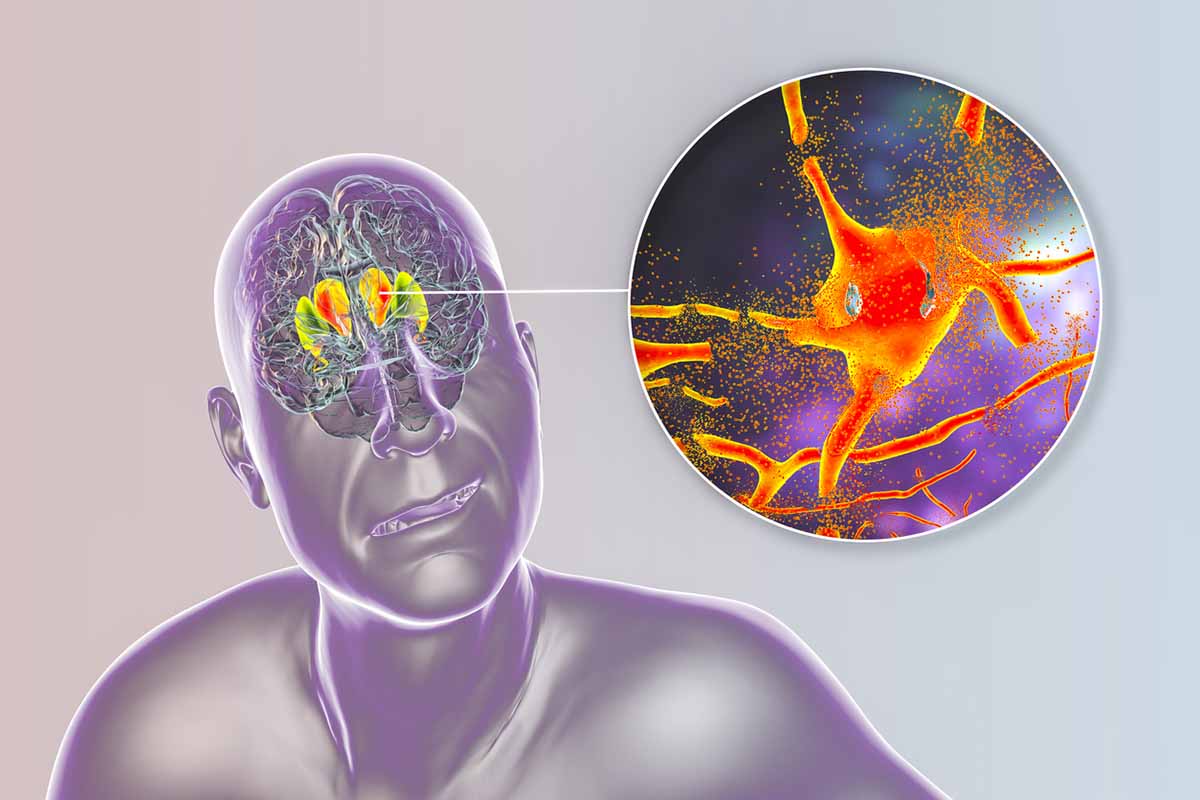Recurrent Catatonia Treated With Lithium and Carbamazepine: A Series of 2 Cases
To the Editor: Catatonia refers to a broad group of movement abnormalities usually associated with mood disorders and schizophrenia.1 Recurrent forms of catatonia have been described by Gjessing2 and by Wernicke, Kleist, and Leonhard (as discussed by Taylor and Fink3). While the prevalence of catatonia among psychiatric patients ranges from 7.6% to 38%,3 there are no reliable prevalence figures for recurrent forms of catatonia. The lifetime prevalence of periodic catatonia, one form of recurrent catatonia, is estimated to be 0.001 in the general population.4 The role of benzodiazepines, antipsychotics, and lithium in the prevention of recurrence in periodic catatonia has been documented. We present 2 cases of recurrent catatonia seen in 2006 treated with lithium and carbamazepine.
Case 1. Ms A, a 30-year-old housewife who was premorbidly well adjusted with no significant family psychiatric history, presented in January 2006 with an acute-onset illness without an identifiable precipitating factor characterized initially by fearfulness and within a few hours by mutism, posturing, active and passive negativism, intermittent periods of agitation, decreased sleep and appetite, and poor self-care. She was initially treated with haloperidol 15 mg/d and diazepam 15 mg/d and also received 4 electroconvulsive therapy (ECT) treatments, with which symptoms resolved in 6 weeks.
For the next few months, she intermittently experienced fatigue, anxiety, depressed mood, and body aches and presented to our center in April 2006 with these complaints. Detailed evaluations ruled out a depressive disorder. She was initially treated with fluoxetine 20 mg/d, olanzapine 10 mg/d, and lorazepam 8 mg/d. She improved completely in a month. A thorough organic workup, including head computed tomography (CT) and electroencephalogram (EEG), revealed no abnormalities. There was a history of similar symptoms occurring episodically in the preceding 16 years. Each episode had an acute onset, and episodes occurred once every 1 or 2 years without a seasonal pattern. Over the years, episodes had increased in duration (from 3 to 4 months initially to 8 to 9 months later) and she had been prescribed various medications (sodium valproate, carbamazepine, imipramine, haloperidol, olanzapine, trifluoperazine, and risperidone) for varying lengths of time. Despite this, there was poor control over her symptoms.
After review in April 2006, we treated the patient with lithium 750 mg/d (serum lithium level, 0.62-0.70 mmol/L) for the purpose of preventing a recurrence of symptoms. We withdrew olanzapine, fluoxetine, and lorazepam as she was asymptomatic at the time and as her history suggested that these agents were ineffective in preventing symptom recurrence in the past. She had no recurrence of symptoms until her last follow-up in May 2008, despite having stressors during this period that had led to symptom recurrence in the past.
Case 2. Ms B, a 21-year-old housewife who was premorbidly well adjusted with no significant past or family psychiatric history, developed an episodic illness at the end of 2005 characterized by acute-onset episodes (about 16-18 at the time of presentation) without any identifiable precipitating factor, lasting from 1 to 7 days. There was complete interepisodic recovery, with 15 days to 3 months between episodes. Each episode had similar symptoms characterized by mutism, posturing, rigidity, active and passive negativism, and poor self-care. For these episodes, she had been treated in the past with parenteral/oral lorazepam 3-6 mg/d, risperidone 2-6 mg/d, and fluoxetine 20-40 mg/d, alone or in combination, and would respond well to them in the short-term (would recover in 2-4 days) but would relapse despite good compliance to them.
She presented to us in June 2007 with similar symptoms. Findings of blood investigations were all within normal limits. Head CT and brain magnetic resonance imaging revealed a well-defined small round hyperdense lesion of 2 ×— 2 mm in the right temporal cortex suggestive of an old granulomatous lesion. Two EEGs revealed no abnormalities. The possibility of temporal lobe epilepsy was considered but ruled out. She was treated with lorazepam 6 mg/d and made a full recovery in about 5 days. Lorazepam was tapered and stopped during the next 10 days, during which time she was treated with carbamazepine titrated to 600 mg/d and had no recurrence of symptoms. She was well at her last follow-up in May 2009.
The cases described shared several features: symptom onset in the second decade; frequent episodes with complete interepisodic recovery; abrupt to acute episode onset without identifiable precipitating factors; catatonic symptoms as the dominant symptomatology in the absence of syndromal depressive, manic, or other psychotic symptoms; and good response in the short-term to benzodiazepines and/or antipsychotics. In both cases, benzodiazepines and/or antipsychotics were ineffective in preventing the recurrence of symptoms.
Classifying these patients as per current nosologic systems proved difficult. In DSM-IV5 and ICD-10,6 catatonia remains mainly as a subtype of schizophrenia. Periodic catatonia, as defined by the Wernicke, Kleist, and Leonhard school, is characterized by catatonic episodes occurring in a cyclical pattern with clinical features of combined stupor and excitement, remissions to an interval state, and an autosomal dominant pattern of transmission.4 With the exception of a positive family history, the cases described meet the definition of periodic catatonia. A follow-up study of periodic catatonia patients, however, found their prognosis to be poor, and benzodiazepines and ECT were deemed unhelpful,3 quite unlike the treatment response and outcome in the patients described. We provisionally diagnosed these patients to have idiopathic, recurrent catatonia.
Lithium,7-9 risperidone,10 lorazepam,11 and olanzapine12 have been used effectively to prevent recurrence of catatonia in recurrent catatonia. The neurochemical hypothesis for catatonia proposed by Northoff13 focuses on a central role for γ-aminobutyric acid (GABA), with down-regulation of GABA-A receptors and an excessive glutamatergic neurotransmission. Northoff suggests that motor and affective symptoms might be more amenable to GABA agonists (eg, lorazepam) than are behavioral symptoms, which may respond better to antiglutamatergic agents (eg, topiramate).
Both lithium and carbamazepine have actions on both of these neurotransmitter systems: carbamazepine has modest GABAergic and antiglutamatergic activity,14 while evidence suggests that lithium stimulates GABA uptake15 and modulates N-methyl-d-aspartate (NMDA) or amino-3-hydroxy-5-methylisoxazole-4-propionic acid (AMPA) receptors. It is interesting to note, however, that sodium valproate, which has strong GABAergic potency and modest antiglutamatergic potency, was unsuccessful in preventing relapses in the first case described. This suggests alternative or additional mechanisms for the efficacy of these agents in recurrent catatonia.
Both lithium and carbamazepine have been implicated in actions on the phosphoinositol cycle, reducing protein kinase C (PKC) activity and increasing the spread of growth cones in cultured neurons.16 It is postulated that mood stabilization is due to the chronic effects of mood stabilizers on this pathway.17 One of the substrates of PKC is myristoylated alanine-rich C kinase substrate (MARCKS) implicated in calcium/calmodulin signaling, defects in which have been identified in catatonic states like neuroleptic malignant syndrome.18 This raises intriguing possibilities about the role of this pathway in the pathophysiology of recurrent catatonia.
Furthermore, the above supports the classification of catatonia as an independent syndrome. We suggest that in the Proposed Categories for Diagnostic Classification of Catatonia,19 idiopathic as an etiology specifier and recurrent as a course specifier might be profitably added. This will encourage greater identification, more focused treatment, and further research into this disorder.
References
1. Sadock BJ, Sadock VA, Ruiz P, eds. Kaplan & Sadock’s Comprehensive Textbook of Psychiatry. 9th ed. Baltimore, MD: Lippincott, Williams, and Wilkins; 2009.
2. Gjessing R. Contributions to the somatology of periodic catatonia. Report X. Pathogenic considerations [in German]. Arch Psychiatr Nervenkr Z Gesamte Neurol Psychiatr. 1960;200:366-389.
3. Taylor MA, Fink M. Catatonia in psychiatric classification: a home of its own. Am J Psychiatry. 2003;160(7):1233-1241. PubMed doi:10.1176/appi.ajp.160.7.1233
4. Stöber G, Franzek E, Lesch KP, et al. Periodic catatonia: a schizophrenic subtype with major gene effect and anticipation. Eur Arch Psychiatry Clin Neurosci. 1995;245(3):135-141. PubMed doi:10.1007/BF02193085
5. American Psychiatric Association. Diagnostic and Statistical Manual of Mental Disorders, Fourth Edition. Washington, DC: American Psychiatric Association; 1994.
6. World Health Organization. International Statistical Classification of Diseases and Related Health Problems, Tenth Revision. Geneva, Switzerland: World Health Organization; 1992.
7. Sovner RD, McHugh PR. Lithium in the treatment of periodic catatonia: a case report. J Nerv Ment Dis. 1974;158(3):214-221. PubMed doi:10.1097/00005053-197403000-00007
8. Petursson H. Lithium treatment of a patient with periodic catatonia. Acta Psychiatr Scand. 1976;54(4):248-253. PubMed doi:10.1111/j.1600-0447.1976.tb00118.x
9. Wald D, Lerner J. Lithium in the treatment of periodic catatonia: a case report. Am J Psychiatry. 1978;135(6):751-752. PubMed
10. Duggal HS, Gandotra G. Risperidone treatment of periodic catatonia. Can J Psychiatry. 2005;50(4):241-242. PubMed
11. Manjunatha N, Saddichha S, Khess CR. Idiopathic recurrent catatonia needs maintenance lorazepam: case report and review. Aust N Z J Psychiatry. 2007;41(7):625-627. PubMed doi:10.1080/00048670701400032
12. Guzman CS, Myung VHM, Wang YP. Treatment of periodic catatonia with olanzapine: a case report. Rev Bras Psiquiatr. 2007;29(4):380-385. PubMed
13. Northoff G. What catatonia can tell us about “top-down modulation”: a neuropsychiatric hypothesis. Behav Brain Sci. 2002;25(5):555-577, discussion 578-604. PubMed doi:10.1017/S0140525X02000109
14. Ketter TA, Post RM, Theodore WH. Positive and negative psychiatric effects of antiepileptic drugs in patients with seizure disorders. Neurology. 1999;53(suppl 2):S53-S67. PubMed
15. Zhou Y, Zomot E, Kanner BI. Identification of a lithium interaction site in the gamma-aminobutyric acid (GABA) transporter GAT-1. J Biol Chem. 2006;281(31):22092-22099. PubMed doi:10.1074/jbc.M602319200
16. Coyle JT, Duman RS. Finding the intracellular signaling pathways affected by mood disorder treatments. Neuron. 2003;38(2):157-160. PubMed doi:10.1016/S0896-6273(03)00195-8
17. Manji HK, Moore GJ, Chen G. Bipolar disorder: leads from the molecular and cellular mechanisms of action of mood stabilizers. Br J Psychiatry. 2001;178(suppl 41):S107-S119. PubMed doi:10.1192/bjp.178.41.s107
18. Gurrera RJ. Is neuroleptic malignant syndrome a neurogenic form of malignant hyperthermia? Clin Neuropharmacol. 2002;25(4):183-193. PubMed doi:10.1097/00002826-200207000-00001
19. Fink M, Taylor MA. Catatonia: A Clinician’s Guide to Diagnosis and Treatment. Cambridge, UK: Cambridge University Press; 2003. doi:10.1017/CBO9780511543777
Author affiliations: Department of Psychiatry, Jawaharlal Institute of Medical Education and Research, Pondicherry (Drs Padhy, K. A. Kumar, and Srivastava); Department of Psychiatry, National Institute of Mental Health and Neurosciences, Bangalore (Dr Subodh), India; Department of Emergency Medicine and Psychiatric Emergency Care Centre, Campbelltown Hospital, Campbelltown, NSW, Australia (Dr Bharadwaj); and Waikato Public Hospital, Hamilton, New Zealand (Dr S. Kumar).
Potential conflicts of interest: None.
Funding/support: None reported.
Published online: February 3, 2011 (doi:10.4088/PCC.10l00992).
Prim Care Companion CNS Disord 2011;13(1):e1-e2
© Copyright 2011 Physicians Postgraduate Press, Inc.



